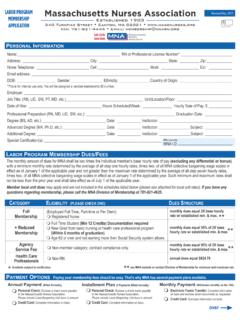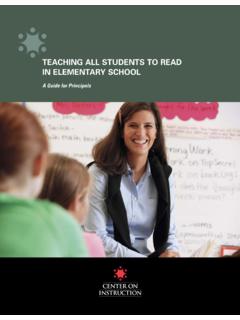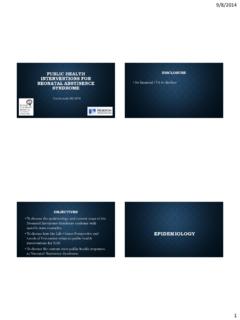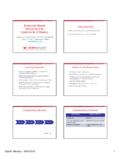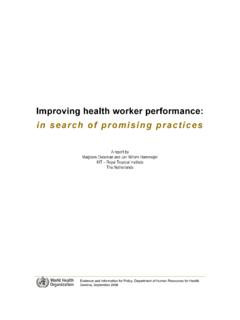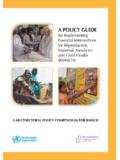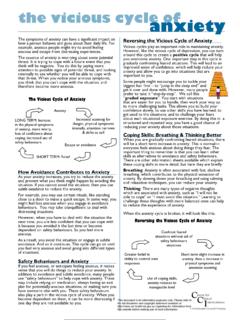Transcription of A Guidebook for Interventions and Resources
1 Impaired Practice in Nursing A Guidebook for Interventions and Resources Massachusetts National Approved, MNA Addictions Nursing Committee 9/11. Nurses Nurses Approved, MNA Board of Directors 9/11. Association United MNA 2011. Impaired Practice in Nursing: A Guidebook for Interventions and Resources 1. Impaired Practice in Nursing: A Guidebook for Interventions and Resources Approved, MNA Addictions Nursing Committee 9/11. Approved, MNA Board of Directors 9/11. MNA 2011. 2 Massachusetts Nurses Association Developed by the MNA Addictions Nursing Committee 2011. Committee Members: Donna White, RN, , CADC, CNS Chairperson of the MNA Addictions Council Susan Dahl, RN. Tom Norcross, RN, CRNA. Bruce Folsom, RN. Adam Barrett, RN, BSN, CCRN. The MNA Addictions Nursing Committee would like to acknowledge the assistance of MNA staff members, Carol Mallia RN, MSN, Chris Doucette, BS and Alan Mac Donald, Esq.
2 In the comple- tion of this publication. The following people were instrumental in the editing of this resource : Stephanie Stephens, RN; Donna Kelly Williams, RN; Kathy Logan, RN. In addition, the commit- tee would like to thank Maria Tricarico, MA, RN, NEA, BC who reviewed this document from a management perspective. Statement of Intent This reference work is not intended to be construed or to serve as a standard of practice. This Guidebook was developed to be a resource to the collective bargaining representatives, within the Massachusetts Nurses Association, as they assist nurses with impaired practice and/or substance use problems. In addition, it serves as a resource for nurses who may have a concern regarding their own use of substances or a colleague's behavior associated with substance use. If any nurse has any questions or legal concerns, MNA encourages legal council.
3 Mandatory Reporting Laws vary by state. This reference refers to the laws and programs available in the Commonwealth of Massachusetts. Nurses in other states are encouraged to refer to their individual state laws, nurse practice acts, professional associations and/or union agreement/con- tracts. Massachusetts Nurses Association Impaired Practice in Nursing: A Guidebook for Interventions and Resources 3. Table of Contents Purpose of the Guidebook .. 4. Statement of the Problem.. 4. Possible Warning Signs.. 5. Assisting a Nurse Colleague .. 7. Initial Meeting with Nurse & Mangement .. 8. Recommendations to the Collective Bargaining Representatives.. 9. Important Considerations .. 10. Algorithims for Assisting a Nurse with a Substance Use Problem .. 13-15. Resources Available.. 16. Legal Considerations .. 17. Return to Work Issues/Re-entry.. 18.
4 General Considerations for Drug testing .. 19. Frequently Asked Questions .. 21. Appendix: A- Sample Return to Work Contract.. 11. Bibliography.. 25-26. 4 Massachusetts Nurses Association The Guide's Purpose is to: Improve understanding of substance use problems in the Nursing Profession. Provide a framework for collective bargaining representatives and co-workers who assist col- leaugues with substance use problems and issues. Outline a process that can guide and assist colleagues towards recovery. Provide a set of recommendations for nurses to address substance use in the workplace. Statement of the Problem: Alcohol and drug dependence affects all segments of the population. Nurses are not immune to the issues of substance use. There is a concern that an increasing number of nurses use substances for a variety of reasons. Precise data on how many nurses are chemically dependent or use sub- stances in various forms is unknown.
5 However, recent statistics in state Boards of Nursing clearly define an upward trend. The two most common issues nurses have are access and availability (Tsindoff, Storr and Wall, 1999). Nurses may be at higher risk for substance use disorders given their risk for physical injury on the job, familiarity with comfort medications, and the overwhelming compassion fatigue on a regu- lar basis given the stress of the work. The approach, the method of intervention and response to a colleague afflicted with a substance use problem, may directly impact the outcome. It is para- mount to concurrently protect the nurse as well as the patients entrusted to his/her care. Substance Use and Dependence is complex and shown to be a brain disease. It is more than com- pulsive use of substances by individuals who may or may not have heritability factors or environ- mental stressors that precipitate brain circuitry changes.
6 A spectrum of behavioral changes often accompanies substance dependence and may illuminate the destruction of all aspects of a person's life. The ability to be a productive employee is margin- Massachusetts Nurses Association Impaired Practice in Nursing: A Guidebook for Interventions and Resources 5. alized as the use of a substance continues. It is incumbent on the profession of nursing to assist our colleagues who may suffer from this disease and facilitate an improved quality of life with a return to health in a life of recovery. Possible Warning Signs: Work habits: Tardiness Absenteeism Long Breaks Frequent trips off the work unit High absenteeism for vague illnesses Dramatic reasons for tardiness or absenteeism Disappearances from the work area Coming to work early or staying late Frequent trips to the bathroom Use of sick time, especially before or after regular days off Willingness to float or pick up extra shifts or transport Willingness to be the Medication Nurse, or medicate patients not assigned to their care.
7 Job performance Poor judgment or mistakes Difficulty completing responsibilities Sloppy job performance Forgetfulness Drowsiness Drug discrepancy Reports of poor pain relief by patients assigned to the nurse 6 Massachusetts Nurses Association Behaviors: Inability to concentrate Mood swings Nervousness Irritability Change in personality Anger if questioned about alcohol or drug use Preference for isolation Memory loss Nodding off during quiet time Illogical or illegible charting/mistakes in electronic medication administration record (EMAR). Frequent breakage or drug spills Frequent use of breath purifiers. Appearance: Deteriorating personal appearance or perfectionism in appearance (to avoid attention). Tremor of hands Diaphoresis Puffy face Odor of alcohol Ocular changes: pin point pupils, glossy eyes or very dilated pupils that don't react to light It is important to note that the behaviors listed above, separately or in combination, are not reli- able evidence by themselves of a substance use problem.
8 No conclusion should be reached in this regard without additional reliable evidence of substance use. Massachusetts Nurses Association Impaired Practice in Nursing: A Guidebook for Interventions and Resources 7. Assisting a Nurse Prior to the Substance Use Problem Affecting his/her Nursing Practice Nurse colleagues working directly with a nurse affected by a substance use problem are often the first to identify the subtle changes in a co-worker. It is important to address the issue as soon as con- cerns are identified. This may encourage the nurse to take action toward recovery before the issue affects their clinical practice. Refer to the algorithm on pages 13-15 Algorithm for Assisting a Nurse with a Substance Use Problem, Prior to it Affecting Workplace Performance/Nursing Practice. A critical step is to inform the nurse about the availability of a family medical leave (FML).
9 It is im- portant that the nurse understands that his/her options will become limited and their license will be in jeopardy if substance use continues. Problems related to substance use most often progress to affect clinical practice. The MNA provides a free and confidential Peer Assistance Program to nurs- es seeking recovery. In addition to one-on-one peer support, the MNA can also provide Resources and answers to questions. The MNA Peer Assistance Program can be accessed by calling 800-882- 8056 ext 755 or 781-830-5755. The nurse should also contact his/her primary care practioner. Because it is not possible to be aware of all the possible causes for the behaviors, it is recommended to preface the discussion with: I am not asking you to confirm, deny or explain the reasons for the observed behaviors. I am here to share concerns and offer possible Resources for your consideration.
10 Assisting a Nurse Colleague With a Substance Use Problem After the Problem Has Been Identi- fied by Supervisor/Management and Nurse is Currently Under the Influence When a manager has identified a nurse with the possibility of being under the influence of sub- stances while on duty, the first priority is to ensure that management provides a prompt and com- prehensive evaluation by a licensed independent practitioner for safety risk/stability and provide safe transport to a safe environment. When a nurse is initially discovered to have a substance use disorder, there is often a significant amount of associated shame and guilt. At this level of inter- vention, the nurse can be at risk for self harm and it is imperative that he/she be evaluated appro- priately and transported to a safe environment. The second concern is to contact the bargaining unit representative to revise the contract and determine if drug tetsting is permitted by contract and, if so, under what circumstances.
